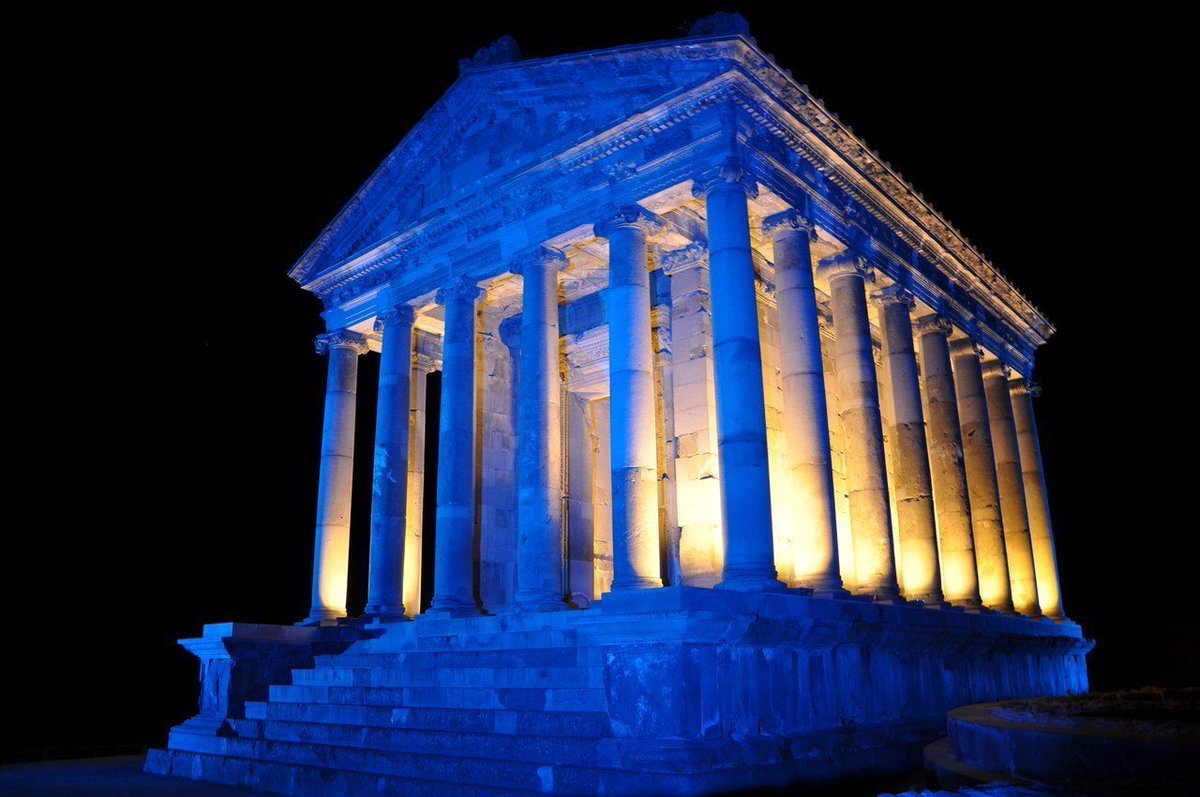The Temple of Garni (Armenian: Գառնիի հեթանոսական տաճար, Gařnii het’anosakan tačar) is a reconstructed classical Hellenistic temple near Garni, Armenia. It is the only “Greco-Roman colonnaded building” in Armenia and the entire former Soviet Union.
It is the best-known structure and symbol of pre-Christian Armenia. Probably built by King Tiridates I in the first century AD as a temple to the sun god Mithra (known as Mihr in Armenian). After Armenia’s conversion to Christianity in the early fourth century, it was converted into a royal summer house of Khosrovidukht, the sister of Tiridates III.
According to some scholars, it was not a temple but a tomb and thus survived the universal destruction of pagan structures. It collapsed in a 1679 earthquake. Renewed interest in the 19th century led to its eventual reconstruction between 1969 and 1975. It is one of the main tourist attractions in Armenia and the central shrine of Armenian neopaganism.
A God Named Mithra
Mithra, a deity popular in the Near East became the patron god of the Roman Empire in the period before Christianity. The name “Mithra” is synonymous with the Greek word “Helios”, which means the sun or sun god, and is a variant of early Vedic (“Mitra”) and Persian (“Mihr/Mehr”) deities.

In some descriptions, the temple is called the Temple to Helios. The deity is believed to have originated in India, evolving in Persia and Armenia into its Zoroastrian form during the Bronze and Iron Ages, from where it was carried to Greece by remnants of Alexander the Great’s armies in the 3rd-2nd cc BCE, where its Manichean form was incorporated into the Greek concept of the Helios god.
During the 1st century, Roman legions, familiar with the concept of Helios, were exposed to its older version in Armenia and Persia, and brought its fire image back to the Roman Empire, where it evolved yet again.
The Garni Temple was built on top of an Urartian temple, with the same floor dimensions as the temple of Susi at Erebuni (5.05 X 7.98 meters) and the same orientation of placing the temple on a north-south axis. This is as opposed to indigenous temples that were placed on an east-west axis and which Christians incorporated when placing the altar to the east.
Sources:
- Smith, Adam T. (2012). “‘Yerevan, My Ancient Erebuni’: Archaeological Repertoires, Public Assemblages, and the Manufacture of a (Post-)Soviet Nation”. In Charles W. Hartley, G. Bike Yazicioğlu, Adam T. Smith. The Archaeology of Power and Politics in Eurasia: Regimes and Revolutions. Cambridge University Press. p. 65.ISBN 9781107016521. …the unique temple-tomb at Garni, just east of Yerevan – the only Greco-Roman colonnaded building anywhere in the Soviet Union.
- The Armenian Monuments Awareness Project – AMAP

